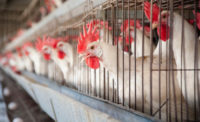Fight for Food Safety
Beware new USDA/FDA alliance

The U.S. Department of Agriculture (USDA) and U.S. Food and Drug Administration (FDA) recently entered into a formal agreement relative to cooperation and coordination. The purpose of the agreement was to “document and formalize new coordination and collaborative efforts between the USDA and the FDA relative to issues of shared concern.”
So, what does this mean for the meat and poultry industry?
Overall, the USDA’s approach to food safety (which historically has been without any real FDA influence) has achieved a relatively impressive level of stability and predictability. We know the circumstances, for instance, under which the USDA will consider certain products to be adulterated because of the presence of harmful pathogens (such as the presence of E. coli O157:H7 in ground beef), and also when it will not (when Listeria monocytogenes (Lm) is present in an identical product).
From a practical standpoint, under existing USDA rules, an establishment could legally sell a filet mignon that is known to be contaminated with Lm as “safe and wholesome” because, in USDA’s view, most consumers are expected to properly handle and cook the product in such a way that will kill any Lm that may be present.
The FDA’s approach to food safety, however, is in many cases much different. Considering this same scenario, the FDA would likely disagree with the USDA and conclude instead that the whole-muscle product is adulterated. In a series of recent notices published on the FDA’s website, it announced for the first time that massive quantities of frozen biscuit pucks designed to be baked by consumers in their homes were being recalled because they were believed to be contaminated with Lm. The recalls were announced despite the fact frozen raw biscuits were not edible in their frozen state and needed to be baked to very high temperatures (which would kill any Lm that was present) in order to be consumed.
In light of the new agreement between the USDA and the FDA to formally coordinate and collaborate on “issues of shared concern,” the agencies will likely work moving forward to more closely align their relative adulteration standards. Once this occurs, I would predict the FDA’s more stringent (and more politically safe) adulteration standards will be embraced. Thus, pay attention to what the FDA is doing and what FDA is saying. While in the past FDA policy rarely directly affected meat and poultry operations, the agency now apparently has a seat at the table. NP
Looking for a reprint of this article?
From high-res PDFs to custom plaques, order your copy today!





